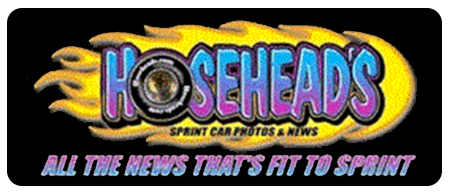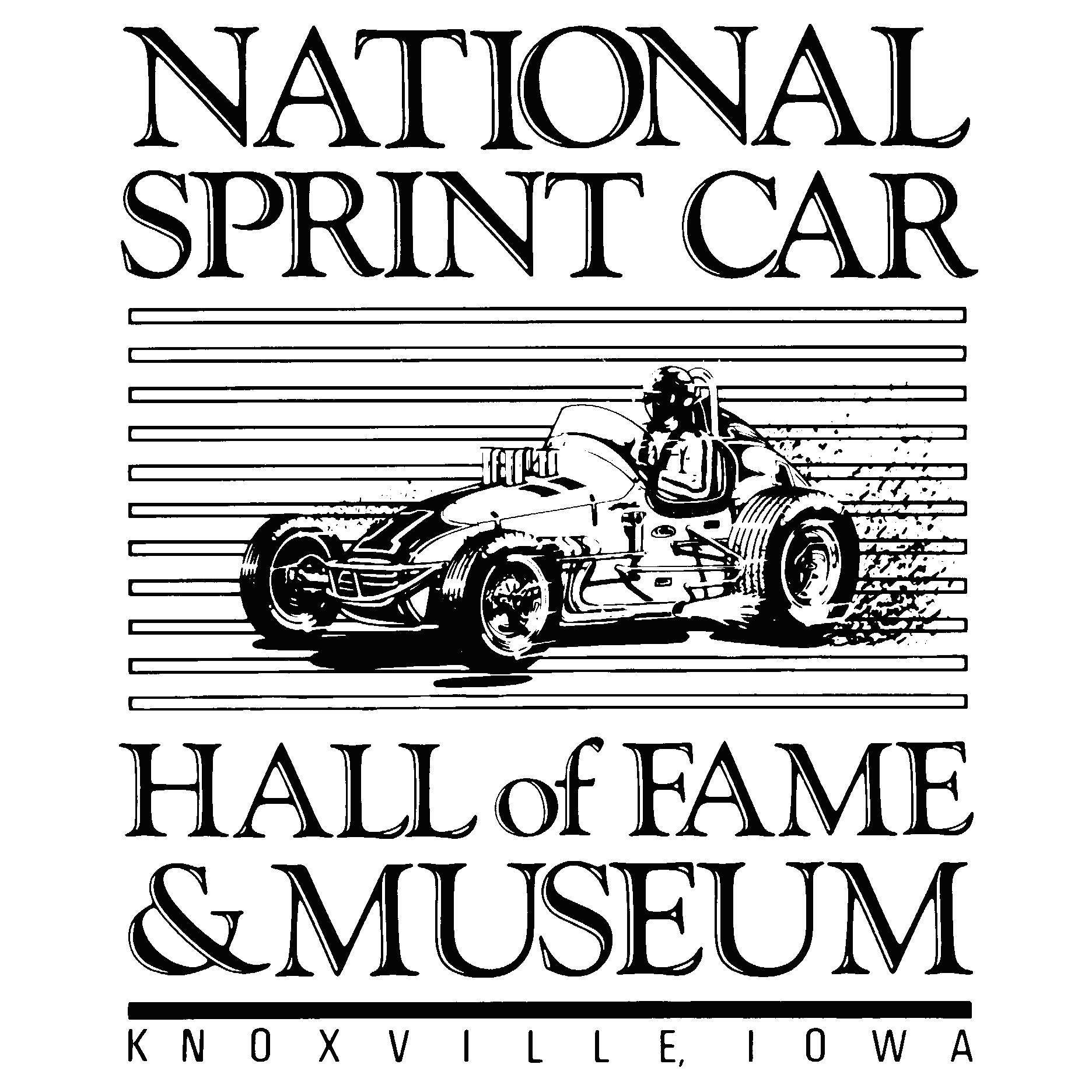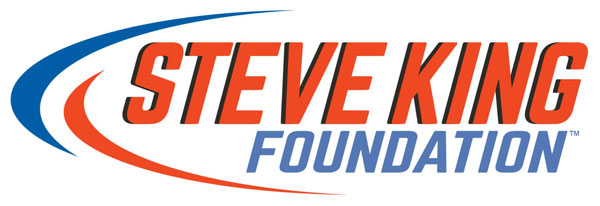After career-threatening injury, determination has Daison Pursley back on track
Photo by Reid Spencer
COLUMBUS, Indiana—On January 14, Daison Pursley walked into the Chili Bowl Nationals to a standing ovation.
That he was walking--or even standing--was nothing short of miraculous.
Two months earlier, the 17-year-old racer from Locust Grove, Oklahoma, had been diagnosed as an incomplete quadriplegic. Pursley had severely damaged the C4-C5 vertebrae of his spine during a violent wreck in the USAC National Midget Series Western World Championships at Arizona Speedway.
Battling for a transfer spot in the third heat against Buddy Kofoid, Pursley collided with his Keith Kunz Motorsports teammate. Pursley hurtled off the cushion into the wall and then barrel-rolled down the backstretch before his midget racer landed on its side in Turn 3.
“I remember the whole day leading up to the heat race,” Pursley said. “Then in that heat race, I remember... not really getting in contact with Buddy or anything, but just kind of hit the fence and then turned over. Then I remember looking at the dirt and then that was it after that.”
Pursley was transported to Banner Desert Medical Center, 28 miles from the track. The next 48 hours were just a blur. Eight months later, seeing the remnants of his favorite driving suit--cut off his body by the medical staff--doesn’t jog his memory of what occurred between the accident and waking up from surgery.
“I feel like everyone, when they have big trauma to their self, they really don't remember it or it is really blurry,” Pursley said. “So I kind of think I'm in the same boat there.”
Pursley’s mother, Shawnda, remembers it all. While faith has always fueled her, never had she been tested like this.
“Those first couple of days, that was an emotional rollercoaster,” Shawnda Pursley said. “I looked back and the first couple of days, I had anger. I went through every emotion there was.
“Then there was a time that I was just by myself for a second. I went to take a shower and then it hit me that God let me keep Daison. He wasn't gone. He was still here. We needed to concentrate on him here.”
So she did. From the first time Pursley sat in a midget race car at age 14, his parents prepared him for this moment. Along with the thrills and accolades that accompany racing, the danger is ever-present.
“It was hard,” Shawnda Pursley added. “The preparation for a 15- or a 14-year-old to hear that what you do for a living and what you want to do for a living can kill you, can paralyze you, can hurt you to (the point of becoming) a life-changing event.
“We had had those talks. And in a very weird way, it’s nice to see that he was listening.”
From the time of the wreck through the surgeries and recovery, Pursley told his mother he was never scared. He was never nervous.
There was no shortage of support for the family from Keith Kunz Motorsports, Toyota Racing Development, and many in the racing community throughout Pursley’s recovery.
“When he got hurt, it was a shock to all of us,” team owner Keith Kunz said. “It was pretty devastating--bad, bad injuries. At that time, you don’t even think it’s possible for him to come (back). You just want him to have a good way of life and hope that he’s not in a wheelchair.”
Neither Shawnda nor Kunz ever doubted Daison’s desire or dedication to racing. Two years ago, the Pursley family packed their belongings and moved from Northeastern Oklahoma to Columbus, Indiana, to be closer to KKM.
“He was really good in the micros when he was coming up,” Kunz added. “Such a likable kid—the whole family. He progressed just with time in the couple of years he was here. He got to where he was really, really good. Probably his personality—and the family’s personality—we all just kind of bonded together and all became like best friends still to this day.”
Although the Pursley's still have a trucking company in Oklahoma, Daison’s father Klint also works for KKM. Shawnda has an office at the shop. Indiana has become their second home.
THE ROAD TO RECOVERY
After the accident, while the USAC Midget tour continued to California for the West Coast Swing, Pursley remained in Arizona for three weeks. He credits neurosurgeon Dr. Jeanette Liu and the medical staff at Banner for “putting (him) back together.”
A day after surgery to repair his spine and a broken rib, Pursley insisted on standing up. The teenager felt the need to assess his condition and determine where his focus needed to be. His mind was sending signals to certain parts of the body, but the response did not always correlate. Initially, the medical staff was apprehensive. Eventually, they gave in. Although he needed three people to bring him upright, Pursley was able to stand.
Not once did the medical staff ever tell him he wouldn’t walk again. He participated in therapy daily. Pursley had lost 33 pounds over three weeks, but his work and determination were paying off. With assistance, he was walking.
“I guarantee there were some times when I got really down on myself,” Pursley said. “But for the most part, I felt like I really had good motivation and was willing to work and willing to do anything. So with the help of a lot of people, prayers and God on my side, we were able to accomplish a lot of things in a short period of time.
“Really wanting to get back in a race car was my main goal.”
As the healing continued, the family discovered the Shepherd Center in Atlanta. Since 1975, the hospital has specialized in the rehabilitation of patients with spinal cord injuries and a variety of neuromuscular issues. Once Pursley was released from Banner, he flew to Georgia for the next round of treatment. He took a medical plane from Arizona to Georgia, then checked into Shepherd on Dec. 7.
Pursley took baby steps. Slowly, he had regained bits of his independence, such as using the bathroom and returning to solid foods. Many of the daily tasks that seem natural, Pursley had to re-learn.
“I remember I was like trying to walk backward for the first time,” Pursley said. “When I got walking forward pretty good and could do that pretty easy. Then they had me turn around for the first time and it was like I didn't even know what I was doing at all.
“It's easy to get down on yourself and then you go back and try to do the same exact thing, say five seconds later, you just took that little break and your body remembers how to do things. So that's pretty cool and pretty crazy, but everything has just kind of been just re-learning myself. Like I've always told my mom, she got a toddler in one person twice. So I feel like I've been a baby again.”
Daily three-hour therapy sessions were the norm. Two weeks into the process, Pursley received a WR1 racing simulator chassis from Chad Wheeler, owner of WR1 Sim Chassis. On Dec. 28, he was able to move without wearing a neck collar and two days later, walked without assistance. Pursley closed out the year with his last day of inpatient therapy and then started Shepherd’s day program on Jan. 5.
Part of the recovery included outings designed to let Pursley re-acclimate to life outside of the hospital. Nine days after he moved from the hospital into the apartments at Shepherd, the family returned to Tulsa for the fifth night of the Chili Bowl Nationals. Pursley drew tremendous inspiration from the experience.
Unfortunately, he returned to Atlanta with Covid-19 and had to quarantine. That delayed his recovery and departure from the Center but didn’t break his resolve.
“He was very hardworking and very, very fortunate,” said Anna Elmers, M.D., a physiatrist who worked with him throughout his rehab at the Shepherd Center. “He’s got, definitely, God’s blessings. Where we were seeing most of his deficits were in his upper extremities, the fine motor movement.
“We never, ever tell anyone that they're not going to, never going to, always going to. I never use those words. I talk about the injury being a very early chapter in a very long book.”
On Feb. 5, less than two weeks before Pursley was scheduled to be released from the Shepherd Center, the shop at the family’s trucking company caught fire. Once again they were tested. Although his sister and brother-in-law were living above the shop at the time, they were safe. Shawnda Pursley remained with Daison in Atlanta—through his release on Feb. 18.
“We were there for two months in Shepherd Center and did hardcore work every single day,” Pursley said. “It wasn’t anything terrible. It was just getting up and doing it. That was probably the hard part and staying there for that long and being away from home.
“But at Atlanta, at Shepherd Center, they do some really miracle things. They get you in shape and back to having a productive life pretty quick.”
Pursley made a lasting impression on Dr. Elmers, whose specialty is physical medicine and rehabilitation with a concentration in spinal cord and brain injury.
“He’s so hard-working, you know if all of my patients were like him, my job would be the easiest job in the world,” Dr. Elmers said. “I was so glad to get him and to be a part of his journey because they're just such a lovely family. It is so exciting to see all he's doing now.”
Pursley knows when the time is right his midget will be waiting for him at KKM. Both Kunz and co-owner Pete Willoughby have been an integral part of his support system throughout his development. Their encouragement has been unwavering.
“I’m really close to him, his family, and to have seen his progress and it’s miraculous what he’s been able to do,” Kunz said. “How the body has healed. It’s different for everybody. From where he was the first few days to now, you really can’t even tell that something has happened to him.
“There’s a lot of good people he’s been with all the way, from the doctors in Arizona to the Shepherd Center to Toyota to Dr. (Terry) Trammel with IndyCar. He’s had nothing but the best care, the best people. And he’s worked really hard to get where he is today.”
From delivering Thanksgiving dinner to the Pursley family in Arizona to preparing Daison for his next move, Toyota has been instrumental in helping the driver get back up to speed. Pursley took full advantage of the Toyota Performance Center in Cornelius, N.C., where drivers work on physical training, nutrition and mental health.
“When I first went to the Toyota Center I really hadn't tried what they call B.F.R.—blood flow restriction,” said Pursley of the process to promote muscle growth and strength. “That was probably a big thing that helped my left hand take off really. It's a pretty cool deal. All the therapists asked if I ever did it and then we went to Toyota and they finally put it on me and I feel like that was probably the biggest help.
“They have a really good group of people. The nutritionist, the coaches there, the doctors like everybody around Toyota, the team that they've put together is phenomenal and their goal is just to get me back in a race car like I want to do.”
Pursley continued to work with Coach Caitlin Quinn, TPC Performance Director and Elijah Westbrook, Assistant Strength & Conditioning Coach. He spent hours on the simulator over the last few months before joining a group of Toyota drivers in go-karts at GoPro Motorplex in Mooresville, N.C., on July 12.
BACK ON TRACK
His first real test came last Friday night at US 24 Speedway in Logansport, Ind., two hours north of the KKM shop in Columbus. The day before the test, Pursley was evaluated by Dr. Trammel to make sure he was ready for making laps behind the wheel of the winged A-class micro sprint.
“It felt really, really good to get back inside of a car,” Pursley said. “There's a couple things that I definitely need to kind of adjust or work on for myself, but for the most part it was it was really, really cool and really fun to get back in that car.”
Although he feels 100 percent, the first few laps were awkward. Pursley wanted to test his hand-eye coordination, his footwork and hand placement—particularly since he is still trying to build grip strength on his left side. With each passing lap, his confidence grew.
“Every time I went out, I felt more comfortable,” Pursley said. “I could run it harder. I could switch my lines up. Everything just felt like normal. Just me out there ripping laps, trying to get a feel for the car again and see how my body would react. That was the main goal that they wanted to see--and nothing went wrong at all. So, we’ll take the next step forward and keep on trying to get race ready.
“I'm a race car driver, so I want everything to happen a little bit faster than it is. It feels pretty slow to me.”
Pursley is not sure when his next test might be. He jokes that Kunz would test every day if given the opportunity. The two racers have bonded in the short time the driver has been with the team.
"We’re together every day, around each other, trying to see this through to where he can come back and race again," Kunz said. “You never dreamed that he’d be back racing—not back to this close ready to go eight months later.”
Running 120 laps on a dirt track was a good place to start. His progress has captured the attention of many in the racing community, including NASCAR Cup champion Kyle Larson.
"It's a miracle and it's just amazing to see how far he's come, honestly, in a very short period of time," said Larson, a childhood hero of Pursley's. "I'm not super close with Daison. Obviously, I don't know the whole extent of everything that he went through on a daily basis but I know just from where I was as a competitor and somebody looking from the outside in, it was pretty sad. I mean, it's still sad. But as 15-16-year-old at the time, as a kid, who's got so much potential and such a long life ahead of him is ever going to be able to ever walk again or what, you know? It seemed pretty grim in the beginning.
"So yes, to see how far he's come, to see the work that he's put in is amazing. And it just shows how mentally tough he is especially, as well as physically tough. To see him stay positive through it all and have a strong support system with his family and friends and Keith and Pete and Toyota, it's pretty neat. To see him make some laps in a micro on video was really cool. He was ripping, like always."
Pursley never stopped believing. Even after the wreck in Arizona, when the diagnosis was grim, he expected not only to be back at KKM but one day to return to racing.
“It’s really hard to put into words how thankful and blessed I am to be in the spot that I am,” Pursley said. “I have a whole different outlook on life, really. It's pretty crazy that I sat in a bed and couldn't move for two weeks, to now, I’m getting back inside of a race car.
“That just goes to show all the support and all the prayers and what God can do. It’s pretty unrealistic, honestly, to kind of think of, but luckily I got that second chance, and I'll just try to try to make the best of it.”

.png)





